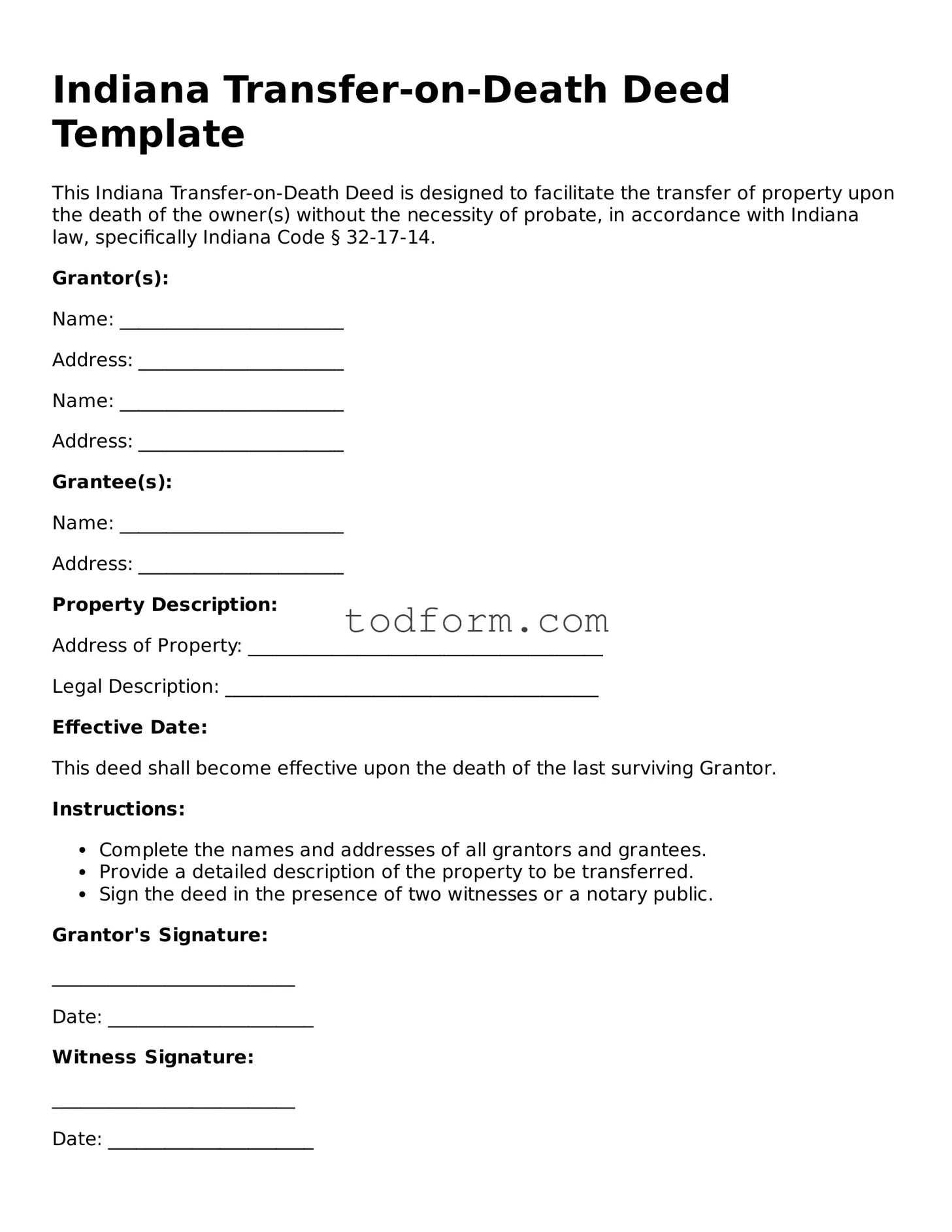Indiana Transfer-on-Death Deed Template
This Indiana Transfer-on-Death Deed is designed to facilitate the transfer of property upon the death of the owner(s) without the necessity of probate, in accordance with Indiana law, specifically Indiana Code § 32-17-14.
Grantor(s):
Name: ________________________
Address: ______________________
Name: ________________________
Address: ______________________
Grantee(s):
Name: ________________________
Address: ______________________
Property Description:
Address of Property: ______________________________________
Legal Description: ________________________________________
Effective Date:
This deed shall become effective upon the death of the last surviving Grantor.
Instructions:
- Complete the names and addresses of all grantors and grantees.
- Provide a detailed description of the property to be transferred.
- Sign the deed in the presence of two witnesses or a notary public.
Grantor's Signature:
__________________________
Date: ______________________
Witness Signature:
__________________________
Date: ______________________
Notary Public:
State of Indiana
County of _____________________
Subscribed and sworn to before me this _____ day of __________, 20__.
__________________________
Notary Public Signature
My Commission Expires: _______________
Important Note:
This template should be reviewed for legal compliance and signed according to Indiana state laws. Consider consulting with a legal professional if necessary.
